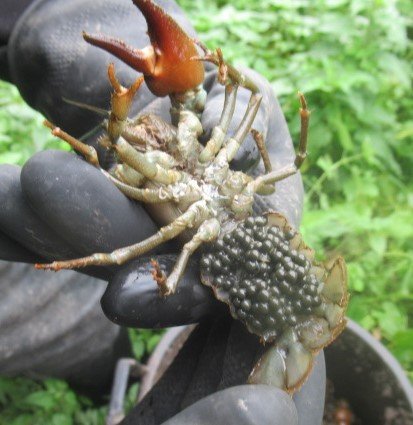9.10.21 - Brimpton - The Crays!
I was fishing the Kennet at Brimpton recently when a man passed me with a dustbin strapped to his back. You see all sorts on the rivers, so after an exchange of pleasantries I did not challenge him. Half an hour later he was back, and the bin was heaving full of large, grotesque signal crayfish. I was appalled. Turns out I had the pleasure of meeting Andrew Leech of the Artisan Fisherman Ltd of Thatcham who is fully licenced to trap and trade in crayfish. A lovely man, he estimated his barrel contained around 300 crayfish averaging, say 8-inches long. He said he returns every 2 or 3 days to empty the traps and hence removes an average of 1,000 crayfish per week in the 'season' and estimates he'd had 15,000 out of our half-mile stretch of the river this year so far!
15,000! I was appalled. I knew that as an invasive species signal crayfish were a problem, but had no idea of this vast scale, and I doubt many anglers do. Otters and cormorants quite rightly get the blame for fish predation, but I can't help thinking that the biggest issue for decline in native fish numbers is actually the crayfish: I can't believe there is a single fish egg left in the water with this level of crustaceans to support. You will see one of my photos shows a female crayfish with a large number of eggs on its tail, and am alarmed to read on Wiki that every crayfish can have a lifespan of up to 20 years! Oh, and as you might know, their burrows (or up to 2 metres) can seriously erode banks.
As a result of this chance meeting, I have today written to the Angling Trust, Environment Agency, Inland Waterways Authority and Natural England asking for confirmation of what action they are taking. I’ll let you know what replies I get.
Oh, and by the way, just for the record, in two morning sessions (I forgot to take my maggots for the first one - doh!) I had 2 x 1lb+ brownies, 1 small roach, 1 small dace and 3 minnows


4 Comments
Recommended Comments
Create an account or sign in to comment
You need to be a member in order to leave a comment
Create an account
Sign up for a new account in our community. It's easy!
Register a new accountSign in
Already have an account? Sign in here.
Sign In Now